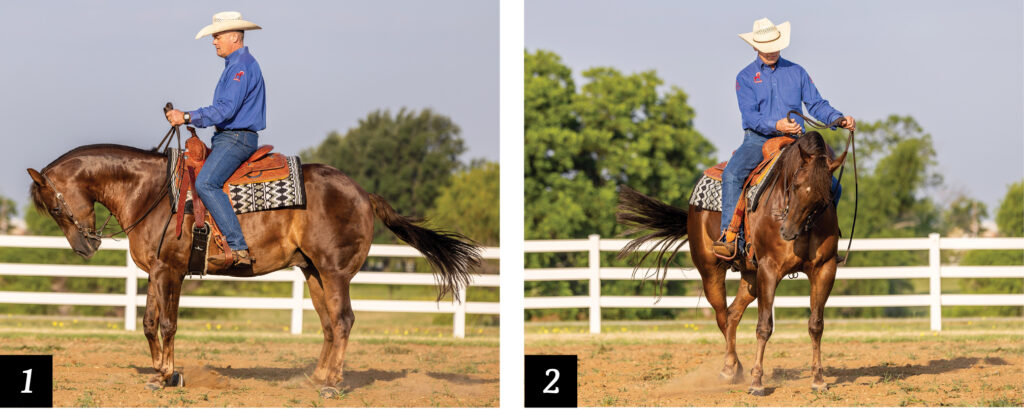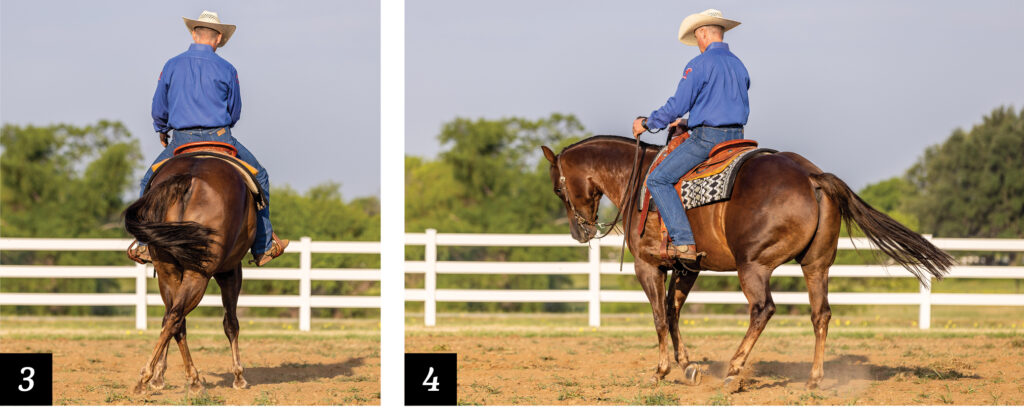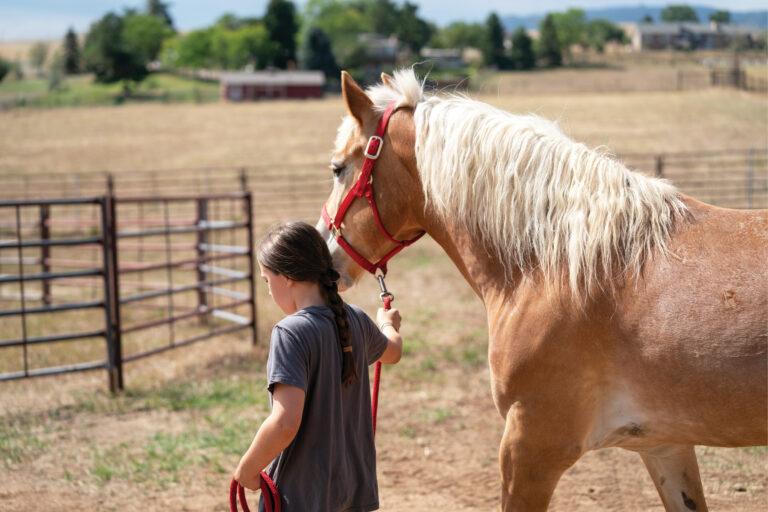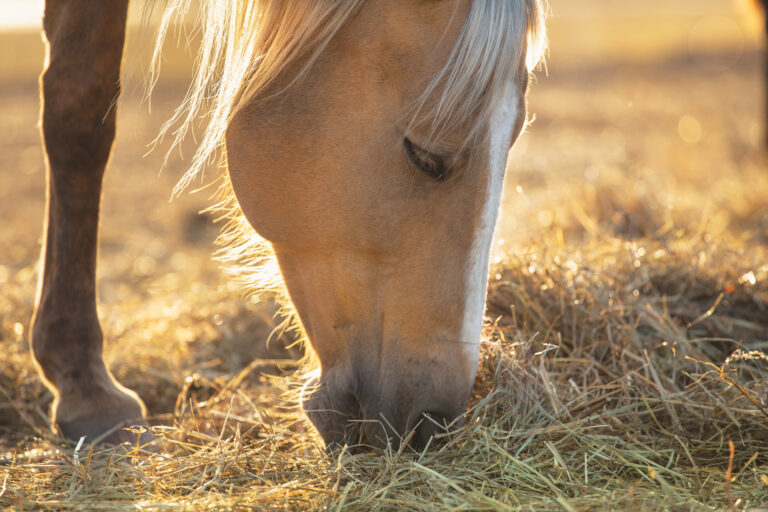The turn on the forehand is a maneuver that’s often skipped over because of its simplicity. But the truth is, this maneuver is far from simple, and can even help you prepare your horse for other fundamentals like lead departures and lead changes. Read on to see how I incorporate this drill into my riding routine to help my horses with body control.
A forehand drill is not a discipline-specific maneuver and can be a useful tool to have in your toolbox regardless of what you do. It can help you gain body control and prepare your horse for more advanced maneuvers later in your horse’s career by allowing you to have control of your horse’s hip. It can also help you create more bend in his poll and softness in his shoulders.
On top of using this drill to help my horses understand basic body control for something like lead departures and the introduction to flying lead changes, I use this drill to improve my horse’s turnaround. By applying this drill to my riding routine, I’m reinforcing the lateral flexion I need for this kind of maneuver, while also applying hip and shoulder control.
But even if you don’t plan on competing, having control over what your horse’s body is doing can be extremely helpful, and can even help you avoid dangerous situations when out on a trail.

One
As I initiate the turn, my body position is extremely important. I’m sitting in the center of my saddle, not leaning too forward, or sitting too far back, and I’m asking my horse to move his hips to the right, so my left calf needs to be under my hip to help guide his haunches in the correct direction. My left rein has slack in it, and my right rein has some tension in it so that my horse’s nose is tipped to the right just enough so I can see his right eyelash.
Two
My right leg is up at the front of the cinch to block his shoulder from moving over, and I have his nose only slightly bent to the right. My horse’s bend should be happening at the poll rather than the base of the neck because when I’m asking for lateral flexion, if I don’t have that bend in the poll, my horse is more likely to brace against me with his shoulders.

Three
It’s easy to catch yourself leaning in one direction or another, especially when you’re riding by yourself and don’t have anybody watching you, but I make sure to sit in the center of the saddle to ensure my horse stays balanced underneath me. My left calf is still under my hip and is pushing my horse’s hip around, while my right leg is more forward to block the shoulder, but still open enough that he has somewhere to go. His left hind leg is crossing in front of his right hind leg, keeping the forward motion I need to complete this maneuver.
Four
If your horse is dull to your leg, or he’s getting behind the motion, focus more on moving him forward and off your leg and don’t focus so much on the actual forehand turn. That comes with time. If he’s getting stuck, I use more leg to step on the gas pedal. Once he starts to move away from the pressure, I’m going to step off the gas and go back to less leg pressure.
If he wants to trickle forward at the beginning, that’s OK. Forward motion is important. The more you do this drill, the more familiar he will be with moving his hips around while holding his shoulders still.

Five
Before I start working the other direction, I walk around the arena for a few minutes to let my horse clear his brain. I might even go work on a completely different maneuver before coming back to go the opposite way. By not doing both directions at once, there will be less confusion from your horse on what your leg and hand cues mean.
Six
Practicing your forehand turn is going to set you up for success for a turn on the haunches. My horse has his nose slightly tipped to the inside, and is putting his weight on his right hind leg and holding his hip still, allowing him to turn without twirling his hips around during the spin.






